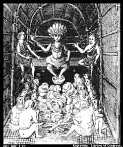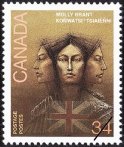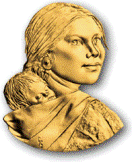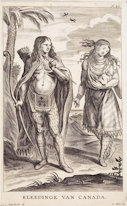The Temptation of Angélique 
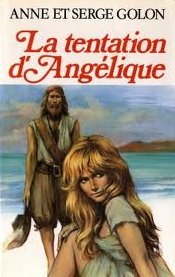 So what was it exactly that tempted Angélique in the New World? I'm sure that the title of this book (which is an accurate and literal translation would have pulled many an interested glance away from the usual fanbase of loyal readers wanting to know what happened next after the Peyracs were wholly reunited on the shores of the New World at the end of 'Angélique in Love' (Book 6) and settled into their new way of life in Countess Angélique (Book 7). In my Reviews section I wrote "These books are also a little different as they span but a "seasonal" time, Countess deals with the season of Winter, Temptation the refreshing Spring and Demon (as we will discover in due course) takes place in the Summer." I also wrote that "I felt the relief of spring coming after that snowed-in winter in Wapassou."
So what was it exactly that tempted Angélique in the New World? I'm sure that the title of this book (which is an accurate and literal translation would have pulled many an interested glance away from the usual fanbase of loyal readers wanting to know what happened next after the Peyracs were wholly reunited on the shores of the New World at the end of 'Angélique in Love' (Book 6) and settled into their new way of life in Countess Angélique (Book 7). In my Reviews section I wrote "These books are also a little different as they span but a "seasonal" time, Countess deals with the season of Winter, Temptation the refreshing Spring and Demon (as we will discover in due course) takes place in the Summer." I also wrote that "I felt the relief of spring coming after that snowed-in winter in Wapassou."
I have never really enjoyed the oppression of a severe winter as described in these books, a theme that recurs in Quebec and Victoire in quite different (and extreme) circumstances so this book, clearly designed to link and break with the Old World brings a spring-like freshness to proceedings. It also heralds the return of, to me, a much-loved character in the guise of 'Goldbeard' the pirate, who apparently out-mysteries even the hitherto mysterious 'Rescator'. If 'Angélique in Love' is 'Rescator's Story' then part two of 'Temptation' must belong as 'Goldbeard's Story' and his complete, quite violent, subjugation by Joffrey de Peyrac. But our mystery man has several points he can score over Joffrey - he has survived the manic vengeance of Sultan Mulai Ismael and knows Angélique as intimately as Joffrey himself! Had the child survived, then Goldbeard and Angélique would also have been parents together. Unfortunately to allow the 'prophesy' to unfold, this child could not survive. By now, it should be apparent that we have been reunited with Colin Paturel whom we met in 'Angélique and the Sultan' (Book 4) and lost sight of as Angélique was escorted away by the King's representatives on reaching French soil once more. In the passing years, the illiterate Colin Paturel drifts aimlessly and is easy prey for those wishing to revenge themselves on the Peyracs.
Angélique's temptation covers a multitude of emotions, most likely the greatest two being her great love for Joffrey and the loss of the shared child with Colin. But it cannot be denied that she loved Colin in the time they had together, but this will have diminished as she discovered and recovered her lost husband and sons. Although she had been instrumental is naming a new-born in memory of her cherished son by Philippe du Plessis, Charles-Henri the only link outside of the Peyrac family unit to exist is Honorine, who despite the circumstances of her conception, had been wholeheartedly adopted by Joffrey - so temptation or not, there is no room for a former lover in this time of her life. The good thing about the return of Colin, is that in due time, the enmity and malevolence that had led him to the Peyracs is overturned and he becomes a staunch ally, although I'm not convinced Joffrey is 100% accepting of him in his new guise. Just as well really as Joffrey needs to be grounded, I've said it before and I'll say it again - he is far too arrogant for Angélique.
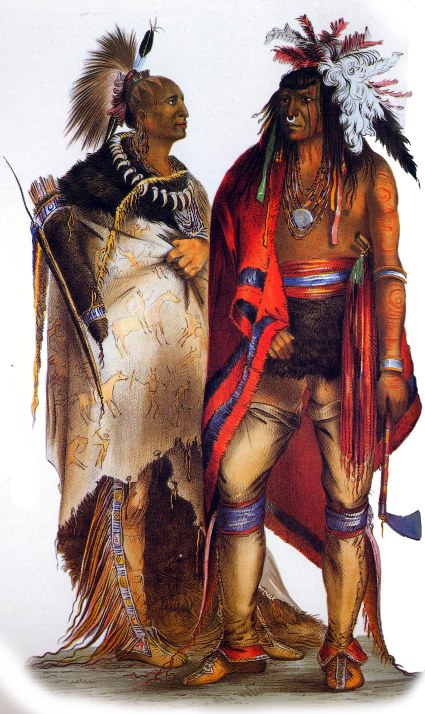
Image courtesy & © of Legends of America and more about the 5 Nations which play such an important part to the background of the novels can be found here
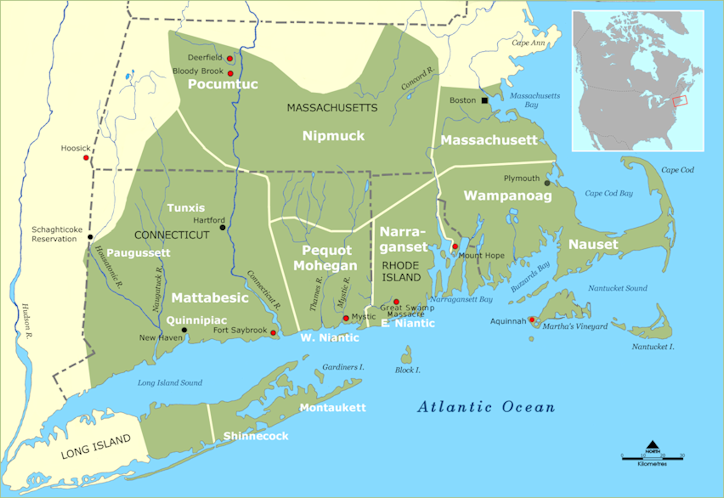
Tribal Territories Southern New England - image courtesy & © Civilian Military Intelligence Group
Mining, Navigation & Scientific Freedom in the New World
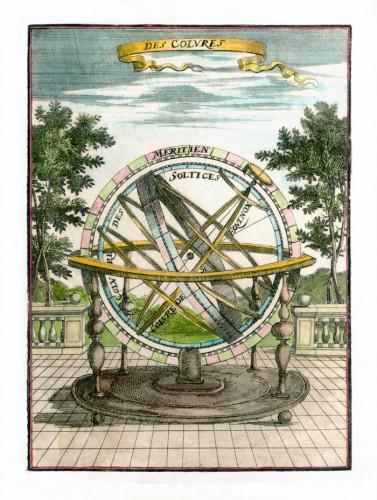
Armillary sphere, 1685, by Alain Manesson Mallet
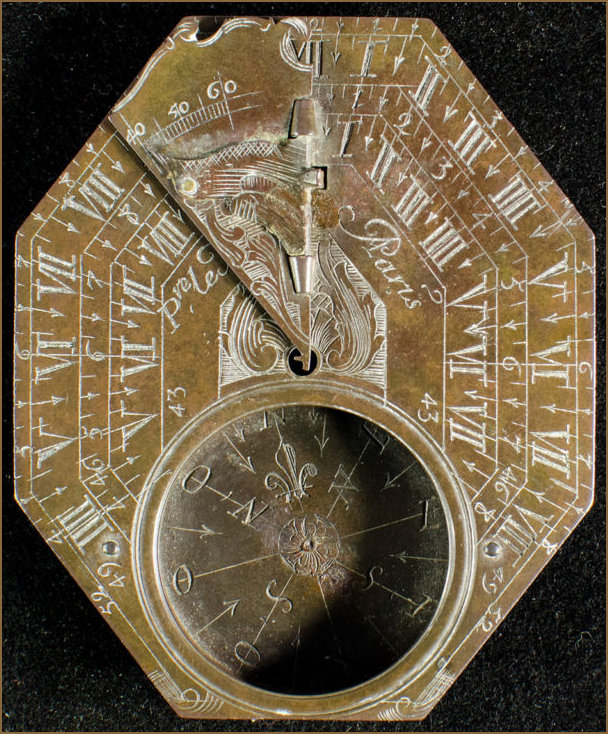
Le Maire Sundial - The mid-eighteenth century equivalent of today's GPS, this sundial compass would have guided French officers along maritime highways stretching from the Atlantic Ocean to the southern end of Lake Michigan. Source : wisc.edu
Joffrey de Peyrac was an early 'gadgets man' and would have loved all the latest scientific knowledge available to him at the time be it maps created by the greatest cartographers of the day (and then he would probably have corrected them) and any aids to sailing and this compass must have been the best in its day as confirmed by wisc.edu : 'The Le Maire Sundial is a rare example of a mid-18th century French sundial (cadran solaire) compass (boussole). It was found near Green Bay in 1902 by a local antiquities collector, Frank Duchateau. The sundial is broken, missing its glass compass cover as well as the back of its gnomon holder. Located on the front surface, beneath a bird-shaped gnomon (the part of the sundial that casts a shadow), is a hand engraved maker's name indicating that the sundial was made in Paris, France: P're Le Maire à Paris. Sundials of this type were distributed to French officers of New France in the 1750s. The compass's reverse (pictured above with a grey background, above) lists the names and latitudes of fifteen French forts, trading posts, and American Indian settlements between Nova Scotia and lower Lake Michigan. The most notable of these places to Wisconsin history is La baye 44.15, known today as Green Bay. It is likely that this navigational instrument was owned by a French officer stationed at La Baye (Green Bay) during the latter half of the 1750s.
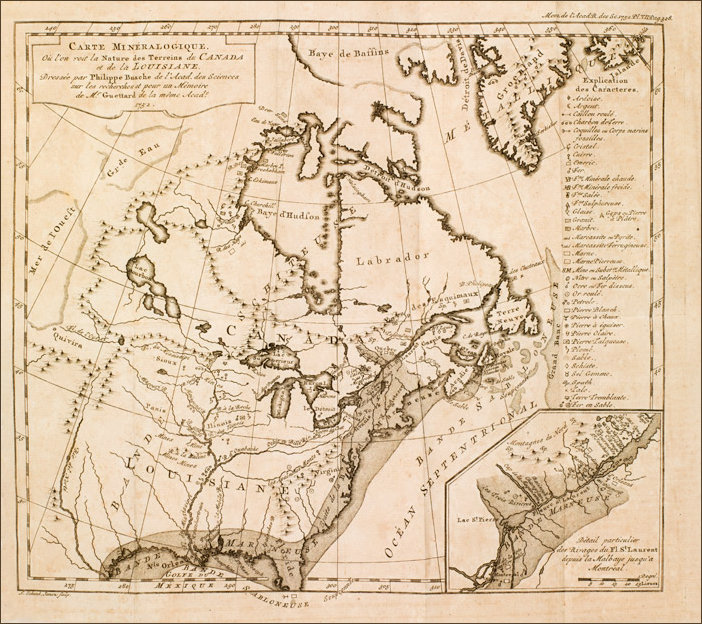
Mineralogical Map where is shown the nature of the Canada and Louisiana Grounds, 1752, by Philippe de Buache et J.-É. Guettard - images courtesy & © of the Virtual History Museum
Joffrey must surely have revelled in the freedom of mining and exploring his scientific curiosity in the New World - this was an ideal place, no Jesuits spying on what experiments he conducted (they, apparently were conducting their own - see extract below), Colin was, at this stage illiterate although with a quick mind, the settlers were there to survive not experiment - the world was indeed his oyster!
"Imagine yourself along the shores of the Saint Lawrence Valley, Acadia or Louisiana, some four or even five hundred years ago. Surrounded by new cultures, new plants and animals and standing on an unfamiliar continent, how would you begin to situate yourself? How would you find out where you were, how far you were from familiar landscapes and ocean routes? How would you make sense of new environments, whether they be forests of unfamiliar plants and animals or the manmade landscapes of nearby Aboriginal communities? How, in effect, would you come to terms with a New France dramatically different than the one you had left behind on the other side of the Atlantic, and how would you record and analyze your experiences to share them with audiences in Paris and throughout Europe?"
These challenges were best outlined by the Jesuit Louis Nicolas, who wrote several natural histories of the Great Lakes region in the late seventeenth century. In his Histoire naturelle des Indes occidentales, he wrote:
"Dear Lord, how am I angry to have embarked upon an enterprise as difficult as writing an account of the New World, where there are so many things to say; not knowing where it is best to start, I admit that I am strongly troubled for what chance is there, even after twenty years of assiduous labour and great voyages, that I can say what is necessary of so many beautiful curiosities in a foreign land where everything is different than ours? What means [exist] to reduce so many vast lands, and to speak in few words of so many different objects … from a country of which we have not yet discovered the limits?"
This was one of the major problems that faced many of those who travelled to New France in the seventeenth and eighteenth centuries, whether they did so as colonists, missionaries, administrators, merchants or explorers." -
"Much of the science of mineralogy was conducted back in France. In 1688, for example, the Marquis de Denonville, then governor of New France, sent samples of lead and copper to France to test for quality. Discussions about the mineralogy of New France in the eighteenth century often focused on the need for skilled workers to assess, collect and work with metals such as copper. While minerals travelled to France for such tests, mining experts also occasionally visited the colony, as illustrated by the 1739 trip of two German experts, father and son, to the interior of the colony to assess the financial viability of the deposits."
Source : the Virtual History Museum
French Cartography in the Great Lakes
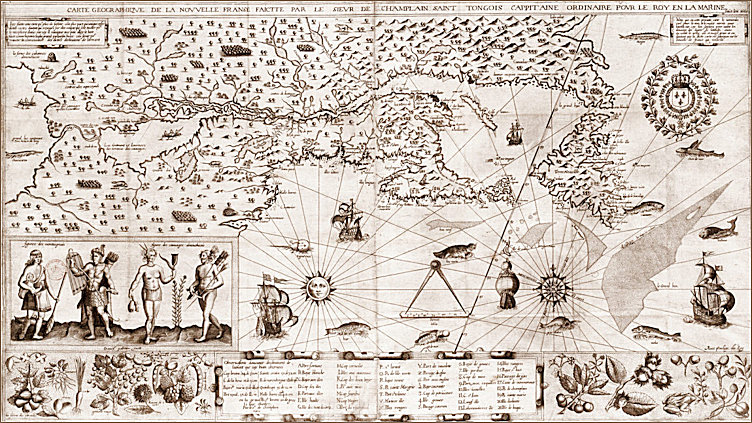
French mariners and explorers using the Le Maire Sundial Compass depended on both their own specialized navigational expertise and maps produced by French cartographers. Many such maps were created based on explorer accounts of the navigable waterways between the Atlantic Ocean to the Mississippi River.
Samuel de Champlain (1567-1635) was perhaps one of the most important leaders in the history of French exploration and mapmaking in North America. Born in the port region of Hiers-Brouage of western France, Champlain later earned a reputation as a skilled navigator and cartographer. Beginning his exploration of North America in 1603, Champlain went on to reveal for his countrymen the source of the St. Lawrence River and the extent of the Great Lakes. His map Carte Geographique de la Nouvelle France, published in 1612, became, along with subsequent maps, a preeminent resource for understanding the landscape of New France in the seventeenth century.
Indeed, these maps were critical for the earliest waves of French voyageurs and Jesuit missionaries as they navigated the western shores of Lake Michigan and Green Bay. These explorers came aboard canoes, shallow-draft bateaux, and eventually, in the late 1670s, decked ships.
But while Champlain and his contemporaries' maps were indispensable for explorers, they were not always exact. Jesuit missionaries took it upon themselves to draft more accurate maps, which they began producing with exquisite detail. Jesuit Francesco Bressani's 1657 manuscript map of New France is one of the most decorative seventeenth-century maps of the region. Other Jesuit maps, like Father Francois du Creux's 1660 Tabula Novae Franciae, and Father Rene Brehant de Gallinee's 1670 Carte du Lac Ontario proved invaluable for the region's growing fur trade and evangelization in the western Great Lakes
By the end of the seventeenth century, northeast Wisconsin was rapidly falling under French influence. This cultural and spiritual transformation was partially cultivated by Father Claude Allouez at his mission of St. Francis Xavier, near what is now De Pere, Wisconsin. The St. Francis Xavier mission, as well as others established throughout New France, were marked by Father Claude Dablon on his widely publicized Jesuit Map of 1672.It was this map, along with improved navigation equipment, that allowed Louis Jolliet and Father Jacques Marquette to reach Green Bay and ultimately the Mississippi River for the first time. This expedition paved the way for further exploration, aided by devices like the Le Maire Sundial, into the North American interior via Green Bay, ushering in a new era of colonial expansion that ultimately transformed the cultural and political landscape of Wisconsin forever. Source : wisc.edu
Respect for Mother Nature
Not to be outdone by her husband Angélique continued to nurture nature and use it to enhance her knowledge of flora and fauna and hone her medical skills (often perceived as 'witchery' even after all this time)! Knowing the type of characteristics that Anne Golon bestowed on her heroine, Angélique would have been the first to reciprocate her knowledge.
"Early colonists and travellers often learned about New World nature alongside native peoples; Champlain joined a Huron hunting party in 1616, and one winter, Le Jeune stayed with an Innu family. They learned which were the proper seasons to catch fish, and about the seasonal cycle of berries and other wild fruit as they hunted and collected with their native hosts.
Native peoples often sought to teach their French guests how to interact with plants and animals. Grounded in their recognition of their own dependence on seasonally available—and sometimes scarce—sources of food and resources, as well as their respect for the spiritual power of the non-human world, they approached plants and animals with caution and reverence. In early seventeenth-century Acadia, the Jesuit Biard learned that he should not throw to the dogs the bones of bears, beavers and other animals that his native hosts had caught for fear of angering their spirit and endangering future hunts. And for those same reasons, the fur trader and explorer Nicolas Perrot learned how to blow tobacco smoke into the nose of the bears he had killed."
Source : the Virtual History Museum
Entertainment in the New World
I love the idea that despite everything that was still going on in Europe, the Entertainment side of things were given a free rein without too much religious interference!
Particularly the Theatre: "On November 14, 1606, Samuel de Champlain and Jean de Biencourt de Poutrincourt returned from an exploration of the coast. They were welcomed in Port-Royal, Acadia, with a performance of Muses de la Nouvelle-France, featuring characters from Greek mythology. Neptune, with long hair and beard, held a trident and was seated in a chariot pulled over the waves by six Tritons. The author of the show, Marc Lescarbot, most likely also composed the music. His work, which combined French verse and the Mi’kmaw language, paid tribute to the colony’s leaders and celebrated the glory of King Henry IV. To the sound of trumpets and cannons, Lescarbot’s aquatic show, staged on barges and canoes in Baie française (the Bay of Fundy), inaugurated theatre in French North America. When the next theatrical performances were presented, New France already had its first governor, Charles Huault de Montmagny. He never missed an opportunity to organize festivities, both to amuse the colonists and captivate Aboriginal people. Indeed, religious ceremonies and processions were often followed by profane festivities. Cannon and musket fire, as well as fireworks, made a strong impression. For New Year’s and other celebrations, the governor, the members of religious orders and most of the country’s inhabitants visited one another, sent each other greetings and exchanged gifts.
In 1640, Montmagny’s secretary, Martial Piraube, staged a play in Québec to mark the birth of the future King Louis XIV. In 1646, the spirit of chivalry was celebrated with a presentation of Le Cid, whose author, Pierre Corneille, had been Montmagny’s schoolmate. Students of the Collège de Québec staged plays by Corneille and Racine, which were performed before the governor. The Jesuits had their works performed by their students. In addition to the Passion play in Latin, they presented dramas in five acts that always had moralistic themes. The Ursulines also staged short moral and religious dramas called pastorals. In those educational settings, theatre was not used to train actors; it was, rather, a memory exercise, and helped students prepare for public speaking and learn how to present themselves in public. It goes without saying that female characters were forbidden in the plays presented in schools for boys.
The tragedies of Racine and Corneille were meant to edify the audience and convey a moral, since the public identified with the heroes. With comedies, it was altogether different. In France, the Jansenists (strict Catholics who favoured rigorous abstinence) wanted to ban comedy, since it stirred the passions, particularly those of the flesh. In the spring of 1693, the arrival in Canada of Jacques-Théodore Cosineau de Mareuil, a discharged naval lieutenant, amateur actor and protégé of Governor Frontenac, led the Church to take a tougher stance with regard to theatre and comedy. After staging Corneille’s Nicomède and Racine’s Mithridate at the Château Saint-Louis, Mareuil wanted to present Tartuffe, by Molière, the most prominent author of comedies in France.
Le scandale du monde est ce qui fait l’offense,
Et ce n’est pas pécher que pécher en silence.
(Tartuffe, act IV, scene v, lines 1505–1506)
(The public scandal is what brings offence, / And secret sinning is not sin at all.)
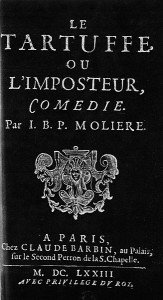 Was it the meaning of these lines that provoked the ire of New France’s second bishop, Monseigneur de Saint-Vallier, or was it the play itself, which attacked sanctimonious individuals who were too often hypocrites? The bishop of Québec was in fact echoing the repressive attitude of the archbishop of Paris, who, some 30 years earlier, had opposed and condemned the first performances of Tartuffe. Monseigneur de Saint-Vallier issued pastoral letters against comedies, and when he instructed priests to preach against impious speech, he was targeting the freethinking Mareuil, whose remarks were sometimes considered blasphemous. Mareuil protested, and the matter was brought before the Conseil souverain. He was subsequently arrested and sent back to France on the last vessel to leave in 1694. Monseigneur de Saint-Vallier managed to cancel the presentation of Tartuffe by spending about a hundred pistoles, and then he, too, went to France. Upon his return to the colony, he took up the battle against impious entertainment with renewed zeal. In a general pastoral letter dating from 1700, the bishop included a series of activities and places that were off-limits to clerics: shows; balls; assemblies; banquets; fairs; markets; inns, taverns and other places where alcoholic beverages were offered; trials; games of chance, court tennis or boules in public places; and even hunting.
Was it the meaning of these lines that provoked the ire of New France’s second bishop, Monseigneur de Saint-Vallier, or was it the play itself, which attacked sanctimonious individuals who were too often hypocrites? The bishop of Québec was in fact echoing the repressive attitude of the archbishop of Paris, who, some 30 years earlier, had opposed and condemned the first performances of Tartuffe. Monseigneur de Saint-Vallier issued pastoral letters against comedies, and when he instructed priests to preach against impious speech, he was targeting the freethinking Mareuil, whose remarks were sometimes considered blasphemous. Mareuil protested, and the matter was brought before the Conseil souverain. He was subsequently arrested and sent back to France on the last vessel to leave in 1694. Monseigneur de Saint-Vallier managed to cancel the presentation of Tartuffe by spending about a hundred pistoles, and then he, too, went to France. Upon his return to the colony, he took up the battle against impious entertainment with renewed zeal. In a general pastoral letter dating from 1700, the bishop included a series of activities and places that were off-limits to clerics: shows; balls; assemblies; banquets; fairs; markets; inns, taverns and other places where alcoholic beverages were offered; trials; games of chance, court tennis or boules in public places; and even hunting.
The Church’s continued disapproval of theatre did not lead to the disappearance of the performing arts. The Ursulines got around the restrictions by presenting mythological and bucolic sketches. In 1700, a man named Montmorency, likely a soldier, was paid 20 livres to give a puppet show that was presented from Epiphany to the end of Lent. And in a letter written in 1749, Élizabeth Bégon reveals that comedies were once again being performed."
Source : the Virtual History Museum
Friends of Angélique New England Tours September 2001 and May 2002
The events of 11th September 2001 (9/11) put a serious dampner on the first of the 'Friends of Angélique' meet ups - some had not begun their journey and were unable to travel to the United States, others were caught up in transit or had their aeroplanes turned back unable to fly over American soil but some had arrived beforehand and what a happy group they make! The second meeting was marred by the fact that founder member and first 'President' of the Group, the late Harvey Adkins had already been diagnosed as terminally ill and was back in America following his medical discharge from the services. I shall always think of Harvey with the view of a non-erupting Vesuvius out of his office window in Italy.
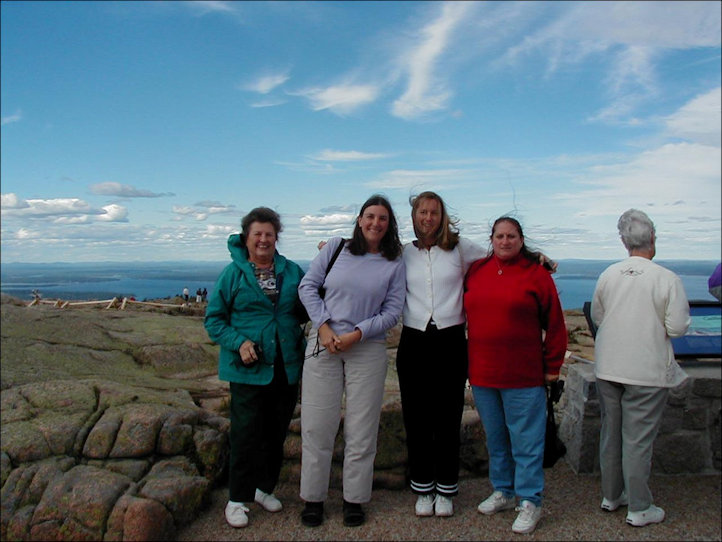
First trip of 'Friends of Angelique' to Gouldsboro, Maine. l to r Norma, Marie, Sylviane and Joyce. September 2001
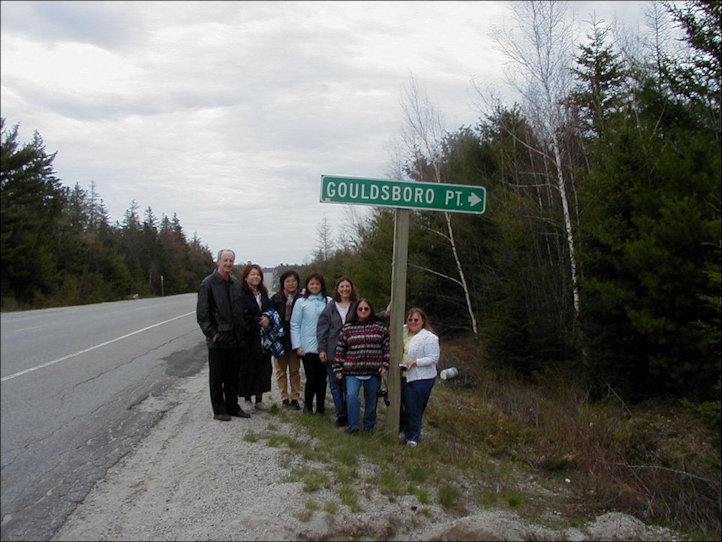
Second trip of Friends of Angelique to Gouldsboro, Maine. May 2002 l to r the late Harvey J Adkins, Mamizu, Irene, Liane, Marie, Joyce and Patty. Missing is Marie Helene
Page refreshed : 6th May 2020 (G)

